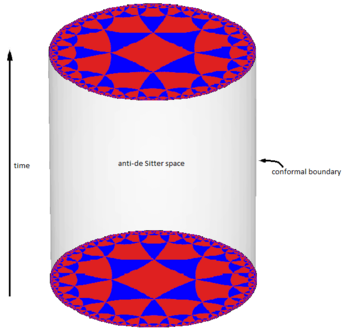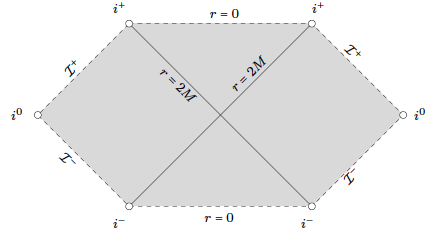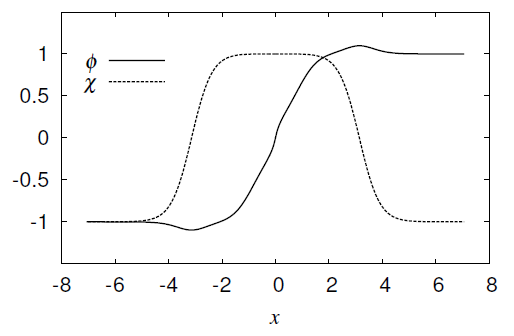Tunneling decay of false vortices with gravitation
We study the effect of vortices on the tunneling decay of a symmetry-breaking false vacuum in three spacetime dimensions with gravity. The scenario considered is one in which the initial state, rather than being the homogeneous false vacuum, contains false vortices. The question addressed is whether, and, if so, under which circumstances, the presence of vortices has a significant catalyzing effect on vacuum decay. After studying the existence and properties of vortices, we study their decay rate through quantum tunneling using a variety of techniques. In particular, for so-called thin-wall vortices we devise a one-parameter family of configurations allowing a quantum-mechanical calculation of tunneling. Also for thin-wall vortices, we employ the Israel junction conditions between the interior and exterior spacetimes. Matching these two spacetimes reveals a decay channel which results in an unstable, expanding vortex. We find that the tunneling exponent for vortices, which is the dominant factor in the decay rate, is half that for Coleman-de Luccia bubbles. This implies that vortices are short-lived, making them cosmologically significant even for low vortex densities. In the limit of the vanishing gravitational constant we smoothly recover our earlier results for the decay of the false vortex in a model without gravity.
Reference: JHEP, 1711 (2017) 028 (arXiv: 1709.03839 [hep-th])
Tunneling decay of false kinks
We consider the decay of "false kinks," that is, kinks formed in a scalar field theory with a pair of degenerate symmetry-breaking false vacua in 1+1 dimensions. The true vacuum is symmetric. A second scalar field and a peculiar potential are added in order for the kink to be classically stable. We find an expression for the decay rate of a false kink. As with any tunneling event, the rate is proportional to exp(-S_E) where S_E is the Euclidean action of the bounce describing the tunneling event. This factor varies wildly depending on the parameters of the model. Of interest is the fact that for certain parameters S_E can get arbitrarily small, implying that the kink is only barely stable. Thus, while the false vacuum itself may be very long-lived, the presence of kinks can give rise to rapid vacuum decay.
Reference: Phys. Rev. D, 92:025031, July 2015 (arXiv: 1506.05091 [hep-th])
Tunneling decay of false vortices
We consider the decay of vortices trapped in the false vacuum of a theory of scalar electrodynamics in 2+1 dimensions. The potential is inspired by models with intermediate symmetry breaking to a metastable vacuum that completely breaks a U(1) symmetry, while in the true vacuum the symmetry is unbroken. The false vacuum is unstable through the formation of true vacuum bubbles; however, the rate of decay can be extremely long. On the other hand, the false vacuum can contain metastable vortex solutions. These vortices contain the true vacuum inside in addition to a unit of magnetic flux and the appropriate topologically nontrivial false vacuum outside. We numerically establish the existence of vortex solutions which are classically stable; however, they can decay via tunneling. In general terms, they tunnel to a configuration which is a large, thin-walled vortex configuration that is now classically unstable to the expansion of its radius. We compute an estimate for the tunneling amplitude in the semi-classical approximation. We believe our analysis would be relevant to superconducting thin films or superfluids.
Reference: Phys. Rev. D, 88:085031, Oct 2013 (arXiv: 1308.3501 [hep-th]) I am only in the acknowledgement since I worked on it at the very end of the project.
Here is a talk that I gave during a grad seminar at McGill on the subject.



